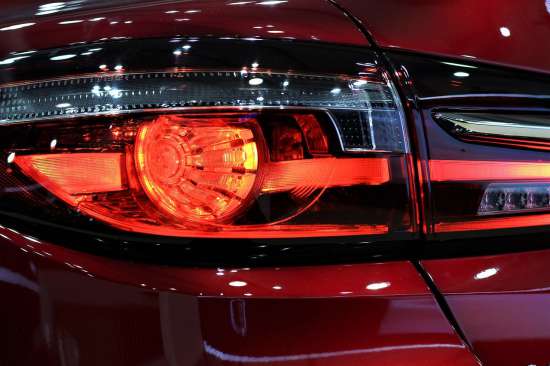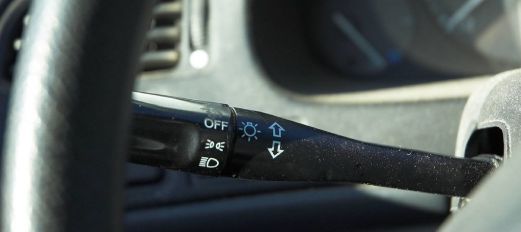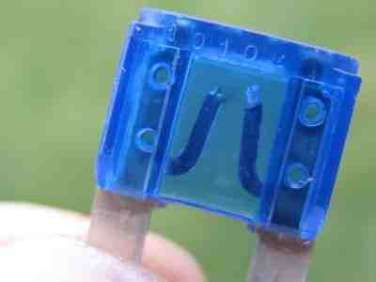We have all either heard in person or through movies by the cops about how crucial turn signals are for road safety. They continuously emphasize their proper use at the proper time as it can cost as well as save lives on the road, especially during the dark, rainy, and foggy days.
And, it is pretty common for one to not notice when their turn signal stays on doesn’t blink properly unless they are charged a fine or a kind passerby lets them know. And, as soon as you know that your turn signal is not switching off and giving others on the road the wrong idea, it is time to get to the root of the cause and fix it.
The most common causes of improper turn signals are blown or damaged bulbs, wires, connectors, flasher units, fuses, and switches. You can usually troubleshoot these faults with the use of a test light.
Let’s look at the various reasons why your turn signal is staying on but not blinking!

Table of Contents
5 Main Reasons Your Turn Signal Stays On Doesn’t Blink
Reason #1 – Dead Light Bulb
If your turn signal light bulb does not seem to work or even blink, it’s probably time for a replacement. You also need to check the life of your light before anything else. A dead or damaged bulb is one of the most common causes of problems that occur with blinkers. Like most lightbulbs, a turn signal light bulb will eventually burn out.
Here are the steps to change it:
- First, purchase a high-quality turn signal light bulb.
- Next, remove the old bulb carefully to avoid damaging the socket.
- Finally, install the new bulb, making sure it’s secure in the socket.
Solution: If the bulb in your turn signal appears to be dead, you can simply replace it with a new and good quality turn signal light bulb. Make sure that you are purchasing a good quality and durable bulb, most bulbs last a couple of years but low-quality ones can die out faster if used often.
Reason #2 – Faulty Or Damaged Turn Signal Switch

Sometimes, and this might happen rarely, you might think the turn signal switch is working and switching on but it might not be due to damage or faulty components. A faulty switch is unable to send a signal to the blinkers to work and blink away. Usually, the issue lies within the wiring, or in the switch itself.
If the problem lies within the switch itself then it is likely that it might be getting stuck in a certain position due to the clock-spring. Either way, the problem is not within the blinker but the device that sends signals to it.
For this issue:
- Seek the help of a trained mechanic who can dismantle the turn signal switch safely.
- The mechanic will inspect the wiring and either repair it or install a new switch if necessary.
Solution: For this particular problem, you would need to acquire the help of a trained professional such as a mechanic to take apart the turn signal switch and to fix the wiring or to even install a new one.
Reason #3 – Oxidation On Bulb Sockets
It is a known fact that different parts of a car oxidize naturally over a period of time, depending on their location and the protection they have against corrosion. More often than not, it skips our minds to check and clean each part of the car, including the turn signal too.
Oxidation and subsequent formation of rust can disrupt the circuit and cause the blinker to malfunction or to stop blinking. Here’s what to do:
- Check the turn signal bulb sockets for any signs of rust or dirt.
- If they are heavily rusted or dirty, consider replacing them.
- Seek the help of a mechanic for the replacement to ensure it’s done correctly.
Solution: It is essential to ensure that the turn signal bulb sockets are not rusted or covered by dirt which can also lead to malfunction. If they seem to be rusted beyond repair, maybe it is time to invest in a pair of new turn signal bulb sockets. To install them, it is advised that you acquire the help of a mechanic.
Ensure routine maintenance and cleaning of your turn signal socket bulbs from now.
Reason #4 – Blown Out Fuse

If a light or an electrical device produces too much energy or power, then the fuse is responsible for the protection and ensuring that the device does not overpower itself. A fuse melts on purpose when too much power or energy is being supplied through it to stop the current and protect the circuit from being damaged.
If you have tried and tested all other possible causes and this is the only one left, it might be time to replace it with a new one. Here’s how to handle it:
- Engage a professional mechanic for this task. Replacing fuses can be tricky, and incorrect installation can cause more issues.
- The mechanic will identify the blown fuse and replace it.
Solution: For this procedure, you would need to acquire the help of a professional mechanic who can change the fuses. It is extremely complicated but if done incorrectly, it can lead to further problems and damage to the wiring. A fuse is an essential component hence, you should get it fitted once and for all properly.
Reason #5 – Bad Ground Of Power To The Turn Signal Light Bulb Socket
Bad ground has always been a pesky and annoying issue that car owners encounter. It can also affect the wiring to your turn signal’s light bulb socket if it is grounded near the bad ground. Here’s how to test it:
- Remove the bulb from the socket.
- Use a test light, clip it to the socket wall, and touch each socket contact with the test light tip.
- Have someone operate the turn signal to check if the wiring is delivering power as expected. It’s also best to get a mechanic involved for a more detailed inspection and repair.
Solution: You would need to begin by removing the bulb, and then clipping the test light to the socket wall, and touching each socket contact with the tip of the test light. Have a mechanic or a trusted friend nearby who can operate the turn signal.
If the test light flashes, then you do not have an issue with the grounding or connection but if it doesn’t then it would be best to acquire the help of a mechanic to fix the problem.
Check out this article if you have problem of both turn signals blinking.
FAQs
What is the most common cause of turn signal problems?
The most common turn signal problem involves burnt-out bulbs. A common indicator of this problem is when your turn signals start blinking faster than normal because of the circuit sensing a drop in resistance, causing the flasher unit to cycle faster. We recommend replacing the bulb as soon as possible to maintain proper function and safety.
Can leaving the blinker on drain the battery?
No, leaving the blinker on won’t drain the battery because it is designed to use minimal power. However, if your car is turned off and other accessories like the radio or lights are left on, this can contribute to a drained battery.
How do you test a blinker relay?
To test a blinker relay, the easiest method is to swap it with another similar relay in your car’s fuse box. If the turn signal begins to operate properly with the swapped relay, this suggests that the original relay is faulty and requires replacement. Always consult your vehicle’s manual to ensure correct testing and replacement procedures.
Conclusion
A turn signal is essential to road safety and needs to be in proper working condition at all times if you are on the road, for your safety as well as others. It is not uncommon for us to notice a malfunctioning turn signal light, but once you do notice it, it is time to figure out the issue right away.
A turn signal light can malfunction due to a number of reasons such as rust formation on the bulb socket, improper grounding of the socket wall (ground), dead bulbs, and even faulty turn signal switches. You can identify and fix some of the issues by yourself, like changing the bulb, but you should acquire the help of a mechanic to ensure everything is set correctly.
